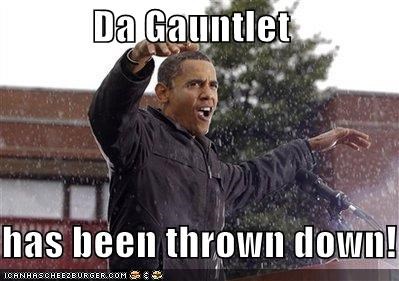[X][Main] Grand Palace
[X][Main] Grand Palace x2
[X] [Secondary] Expand Economy
Provinces – [Main] War Mission – Support Lowlanders, [Sec] More Blackbirds, [Sec] More Carrion Eaters, [Sec] Expand Econ
Stallions – [Main] Build Temple – Dragon Graveyard, [Main] Expand Econ
Western – [Main] New Settlement, [Main] Build Wall, [Sec] Expand Forests, [Sec] Expand Econ, [Sec] Survey
Greenshore – [Main] Trade Mission – Trelli, [Main] Aqueduct (4/8)
Hatvalley – [Main] New Settlement, [Main] Survey
Heaven's Hawk – [Main] New Settlement, [Main] Watchtowers
Lowland Minors – [Main] War Mission – Swamp Folk, [Main] New Trails
Within the libraries of the People, there are several points of wisdom that have been enshrined as things that all leaders should remember for the future. One of those was "Bad things happen, deal with them".
Well, bad things were happening in the lowlands, and only the Red Banner had managed to keep the situation from completely deteriorating. Unfortunately, when the king had sent the heir to look over the situation, it had turned sour with unpleasant quickness. Apparently the Thunder Horse had been willing to mark the Tocholli River as their eastern border for the time being and had even offered to potentially hire the services of the Red Banner for dealing with the Swamp Folk, who they were also fighting with, but the heir had put his foot in his mouth and apparently then tried his damnedest to chew it off. What could have been a potential settlement between the two groups to ease tensions had turned into the Thunder Horse deciding to go at it further just because of how insulted they were.
Ugh... a new heir would need to be elected after that incident, but the last election had already been a political knife fight, which was why they had ended up with a semi-incompetent compromise candidate.
Frankly, half the reason that they were drawing up the plans for a new palace complex was that the current residence of the king was too small to hold all of the important people, their advisors, the people to keep all of those people fed and clean when they were spending the whole day arguing with each other, and going elsewhere was eating up administrative time with unnecessary walking for all involved. Just having a bigger residence that could house everyone and keep them close together and close to administrative experts would massively ease the headaches of governance. However, the council arguments over the design and location of the palace were already quite intense.
For placement, the big argument was where to put the new palace. While Valleyhome was obvious, the other two candidates were Sacred Forest and Redshore. Given the pilgrimages of shamans and commoners to the temple in Sacred Forest, there were many who felt that it was already the heart of the People, and it had the connections to also serve as a significant center of government. Redshore, while not quite as grand or urban as the larger Valleyhome or Sacred Forest, had always been a major center of trade and industry, and given its access to the sea was probably the easiest for the majority of provinces to get delegates to. Also, while its geography meant that getting proper amounts of water to allow it to really expand remained a tricky proposition, once an aqueduct was put in it would have the best and easiest drainage of them all. Of course, everyone had their own opinion on the politics of it all, and the argumentation could get pretty vicious at times.
While the where was a fairly major question, perhaps even bigger was the question of what. Some of the plans that were being talked about by the architects and builders were quite ambitious, and that had many on the council worried about how they were going to pay for everything if some of the designs were implemented. Also, the bigger the whole thing was the longer it would take to build, and if they were going to be displacing many to have a good chunk of urban territory they would really want to settle design quickly. So far the smallest and most modest designs that seemed to have everything that they needed had a complex of residences for the king, the council, administrators to do all the business of government, guest rooms for visiting dignitaries and provincial chiefs, room for all of the family of the above, and room for all the support staff to keep all of the above from starving and/or dying of disease in their own filth. It was practically a small city just with that! Then there would be a large chamber set aside where the king could meet with everyone in peace and comfort and they could do the work of the kingdom properly. There would of course be the display of artwork and civic relics to remind the People and visitors of the power and importance of the place. Finally there would be an annex where a shrine to the gods would be kept, meaning that the king could get the minor religious duties out of the way without having to leave the palace - although there were a few proposals that omitted the shrine in favour of something else, typically a library.
Beyond that, the proposals tended to attach further annexes upon the palace, making it bigger and giving further capabilities. Some were just modest extensions of what was already going on, others were...
Well, there was a proposal to turn the palace into a library that had twice as much storage space as the existing libraries put together, pretty clearly put forth by an extremely overworked clerk. There was another proposal by someone paranoid about what Phygrif the Conqueror had done to Xohyr returning to bite them by making the palace into a near mountain of stone walls. Still, the various extensions and the like were easy to categorize.
First, the Great Hall could be extended, made larger to accommodate more visitors, and to also appear more impressive to outsiders. Some proposals suggested making it big enough to serve as something of a community focus point, where a significant fraction of the populace could attend during major festivals, although that was probably overkill.
Second was extending out the shrine, making it into a proper temple to the gods, probably with Mathulmyn as the patron of the temple itself and Fythhagyna and Crow included somewhere in a prominent but not central role. Further proposals would extend it out further and increase the amount of religious authority of the palace, and thus the king. It would also increase the king's access to skilled advisors on spiritual matters.
Third, and almost certainly included somewhere, was a library annex. While the smallest proposals just made it a general administrative storage area and reference library for the king and advisors, larger proposals expanded it out to be at least as large as the library already crammed into Valleyhome or as part of the temple in Sacred Forest, with a few proposals where the palace was more library than palace! Given all the writing the government generated, a library was probably a necessity, and the bigger the more important records could be kept on immediate hand for the king to have easy access to.
Fourth was the proposal for garden complexes. These were frequently courtyards, often extensions of the Great Hall, and they were there for the purposes of beauty, health, and spiritual strength. There would probably be a few small gardens in quiet spots no matter the design chosen, but these proposals were significant efforts. Many priests proposed that gardens be included in order to ensure that the palace remained connected to nature, and also to ensure an at-hand supply of important plants that could be grown there.
Fifth were storehouses. The king's residence was already close to a number of central storehouses and granaries so it made sense, and there would of course be internal stores for the palace's consumption, but these proposals were for major areas to do nothing but store critical goods and administer their collection and distribution. These would certainly help with administration purposes, and help the city if it were ever cut off from food supplies by disaster or war.
Sixth were proposals to have artisans brought in to live within the palace, producing warrior goods. This would ensure that the king would have the best equipment available and that the best warriors would always come to the palace for their gear, rather than potentially going elsewhere. Many of the association members also suggested that having such an annex would also help tie the king more closely to the artisans by having them live in association with each other.
Finally, there were walls. While there would have to be some degree of separation between the palace and the rest of the city for the purposes of security, some proposals went further, suggesting walls like those of city fortifications, or even walls of greater height and thickness than in any city yet built! While there was certainly a point of diminishing returns, especially if the walls effectively cut the palace off from the city and did not include extensive internal stores or its own arsenal, perhaps some additional defences would help against less spectacular threats than armies.
Oh, and of course, there were the interactions that might emerge from having different annexes with each other. An arsenal, stores, and fortification all together would make the palace an impressive internal hard point. Especially large great halls that lead in part to gardens had the potential to be quite impressive, and what wonders might a large library, temple, and arsenal produce when all in close association with each other and with access to the king? It was a complex question with many proposals that the king and council would have to sort out.
Location
[] [Loc] Valleyhome
[] [Loc] Sacred Forest
[] [Loc] Redshore
Choose annexes, up to 8. All can be repeated for extra effect, and there can be special effects from certain combinations. Each annex after the first adds 1 additional action to the project. Not including at least one shrine annex will have political and religious implications
[] Great Hall Expansion
[] Shrine
[] Library
[] Gardens
[] Storehouse
[] Arsenal
[] Fortifications
AN: Proper mid-turn actions next update, this will be complex enough as it is

